How To Convert Fresh Herb to Dried Herbs to Ground
Home cooks must know how to convert fresh herbs to dried or ground versions. This makes every dish more flavorful and balanced. Fresh herbs add brightness and vibrancy, while dried and ground herbs bring convenience and concentrated flavor.
You can easily substitute fresh basil for dried or dried rosemary for ground by learning these conversions. This skill is invaluable when adapting recipes or working with seasonal ingredients. With the proper knowledge, you can experiment boldly and make the most of your pantry and garden every time you cook.
Print & Save
Herbs | Fresh | Dried | Ground |
| Basil | 2 teaspoons finely chopped | 1 teaspoon dried | ⅓ teaspoon ground |
| Bay Leaf | 1 leaf fresh | 2 leaves dried | – |
| Chervil | 3 teaspoons fresh | 1 teaspoon dried | – |
| Chili Pepper | 1 medium fresh | ½ teaspoons flakes | ¼ teaspoon powder |
| Chives | 1 tablespoon fresh | 1 teaspoon dried | – |
| Cilantro | 3 teaspoons fresh | 1 teaspoon | – |
| Cinnamon | 1 cinnamon stick | – | ½ teaspoon |
| Cumin | 4.5 tablespoons whole seed | – | 3 tablespoons |
| Dill | 3 teaspoons fresh | 1 teaspoon dried | – |
| Fennel Fronds | 3 teaspoons fresh | 1 teaspoon dried | – |
| Garlic (large) | 1 clove fresh (1.5 teaspoon minced) | 1½ teaspoon minced | ¼ teaspoon powder |
| Garlic (small) | 1 clove fresh | ½ teaspoon minced | ⅛ teaspoon powder |
| Ginger | 1 tablespoon freshly grated | – | ¼ teaspoon ground |
| Ginger | 1 tablespoon minced | – | ¼ teaspoon ground |
| Lemon Grass | 1 tablespoon fresh | 1 teaspoon dried | ¼ teaspoon powder |
| Lovage | 1 tablespoon fresh | 1 teaspoon dried | – |
| Marjoram | 3 teaspoons fresh | 1 teaspoon dried | – |
| Mint | 3 teaspoons fresh | 1 teaspoon dried | – |
| Onion | 1 medium onion | – | 3 teaspoons powder |
| Oregano | 3 teaspoons fresh | 1 teaspoon dried | ⅓ teaspoon ground |
| Parsley | 2 teaspoons fresh | 1 teaspoon dried | – |
| Rosemary | 3 teaspoons fresh | 1 teaspoon dried | ½ teaspoon ground |
| Sage | 2 teaspoons fresh | 1 teaspoon dried | ⅓ teaspoon ground |
| Sorrel | 2 teaspoons fresh | 1 teaspoon dried | – |
| Star Anise | 1 star anise fresh | ½ teaspoon anise seed | ¾ teaspoon ground |
| Tarragon | 3 teaspoons fresh | 1 teaspoon dried | – |
| Thyme | 3 teaspoons fresh | 1 teaspoon dried | ⅓ teaspoon ground |
| Vanilla | 1-inch vanilla bean | 1 teaspoon extract | ½ teaspoon ground |
There’s no way I will remember all these conversions, so I’ll make a copy of the chart below and print it out, then tape it to the inside of one of my cabinet doors so it’s handy when needed. It sits next to my Fresh Spice to Dried Spice Conversions and Meat Doneness Chart.
Let me start by saying I try to use fresh herbs over dried herbs as much as humanly possible. We grow fresh herbs in the spring and summer; many last through the fall and some right into winter.
If we don’t have them in the backyard, they are easy enough to find at the supermarket. Still, they can get costly at certain times of the year so if you only need a little of a particular herb for a recipe, be sure to incorporate it into something else you are preparing. If all else fails, make a soup or stew and use up some of those herbs.
How Fresh Are Your Dried Herbs?
I wouldn’t say I like using dried herbs because I never know how long they’ve been in the spice cabinet. Generally, ground spices and herb leaves will be considered “fresh” if stored in optimal conditions for 1 to 2 years.
I know some of the spice jars in my pantry are as old as my kids, well, maybe not that old, but they do tend to get lost and unused, especially those in the back.
And what about when you purchase a new container but feel like you have to wait until you finish the older jar, even if the spices in it are flavorless? I suppose we should all use a permanent marker and date the jars as soon as we purchase them or put a throw-out date on them but then how do we know how long they’ve been in some storage facility or supermarket shelves?
How do we really know how much shelf life is left in our seasonings?
I don’t think we do, so I suggest that before you start cooking a meal that requires dried herbs, you check your spice cabinet to ensure you have what you need and then give them a quick sniff and taste to make sure they are fresh enough to use.
If they don’t taste as potent as you like, you may need to add more than called to make up for the difference.
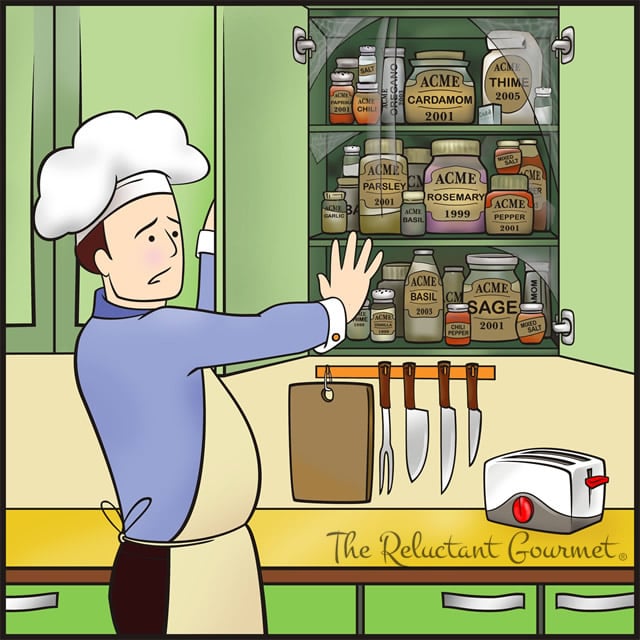 Ratios For Converting Fresh Herbs to Dry Herbs to Ground Herbs
Ratios For Converting Fresh Herbs to Dry Herbs to Ground Herbs
All You Really Need To Know About Converting Fresh Herbs to Dry Herbs
The general rule for dried “flaky” herbs like dried cilantro or dried tarragon is 3 to 1 or three parts fresh to one part dried. You can also look at this as
1 tablespoon fresh herbs = 1 teaspoon dried herbs
If you work with dried ground herbs like ground ginger, which will be even more potent than the dried flaky herbs, the general ratio is 4 to 1 or four parts fresh to one part dried.
Another general rule:
1 teaspoon dried leaf herb = 1/2 teaspoon ground dried herb
Why These Ratios?
If you’re wondering why you need so many more fresh herbs than dried ones, remember that fresh herbs like basil and parsley are 80% to 90% water. In the drying process, the water evaporates, leaving highly potent essential oils with more concentrated flavors than their fresh counterparts.
When discussing rosemary and thyme with even harder leaves than basil, flavor intensity can be even more significant, so be careful when adding these dried spices to a dish.
Exceptions to the Rule
Like everything in life, there are always exceptions to my general rules above. For example, you would substitute one fresh bay leaf for two dried or one medium onion for one teaspoon of onion powder. Both basil and parsley surprised me with a 2 to 1 fresh to dried.
I searched the Internet for what I could find for these conversions and created this chart. There was no consensus between all the sites, but this should be a good start to work with until you come up with your ratios.
Other Important Ingredient Conversions
| BEAN CONVERSIONS | INGREDIENT SUBSTITUTIONS |
| HERB CONVERSIONS | MUSHROOM CONVERSIONS |
| GRAIN CONVERSIONS | PASTA/RICE CONVERSIONS |
| INGREDIENT CONVERSIONS | TOMATO CONVERSIONS |

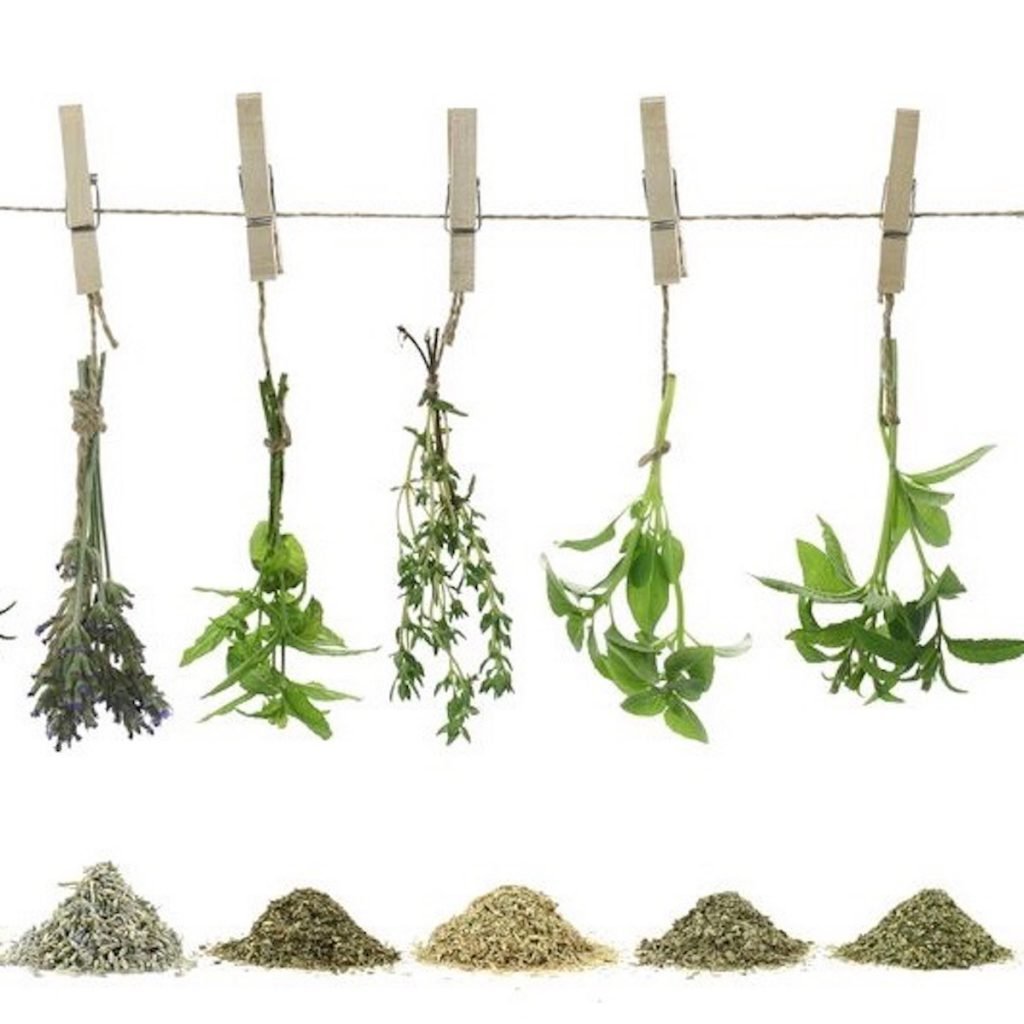
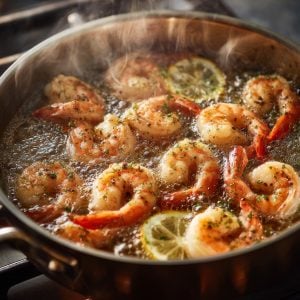
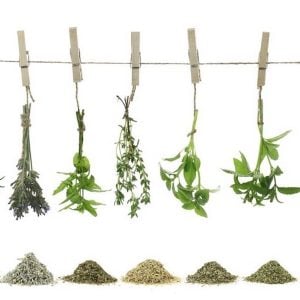
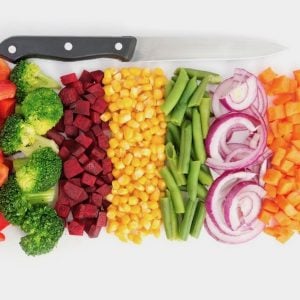
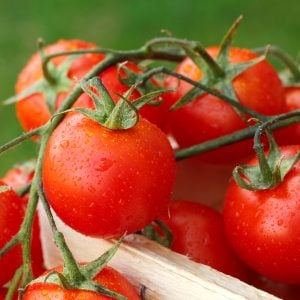
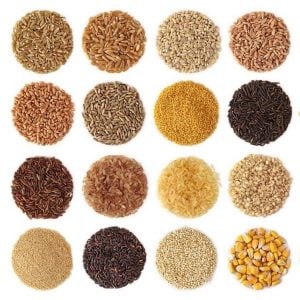
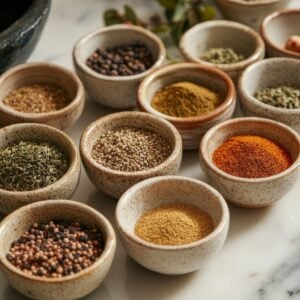
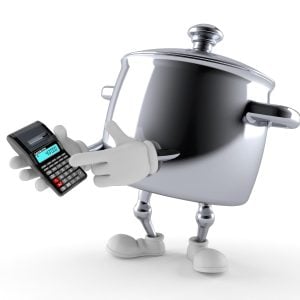
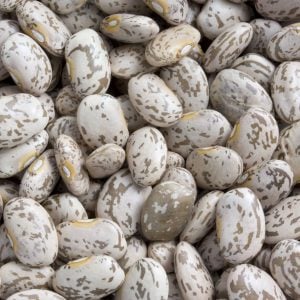
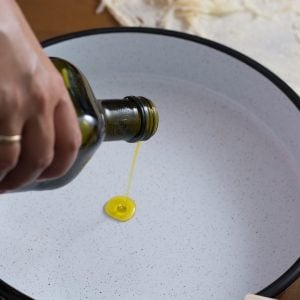

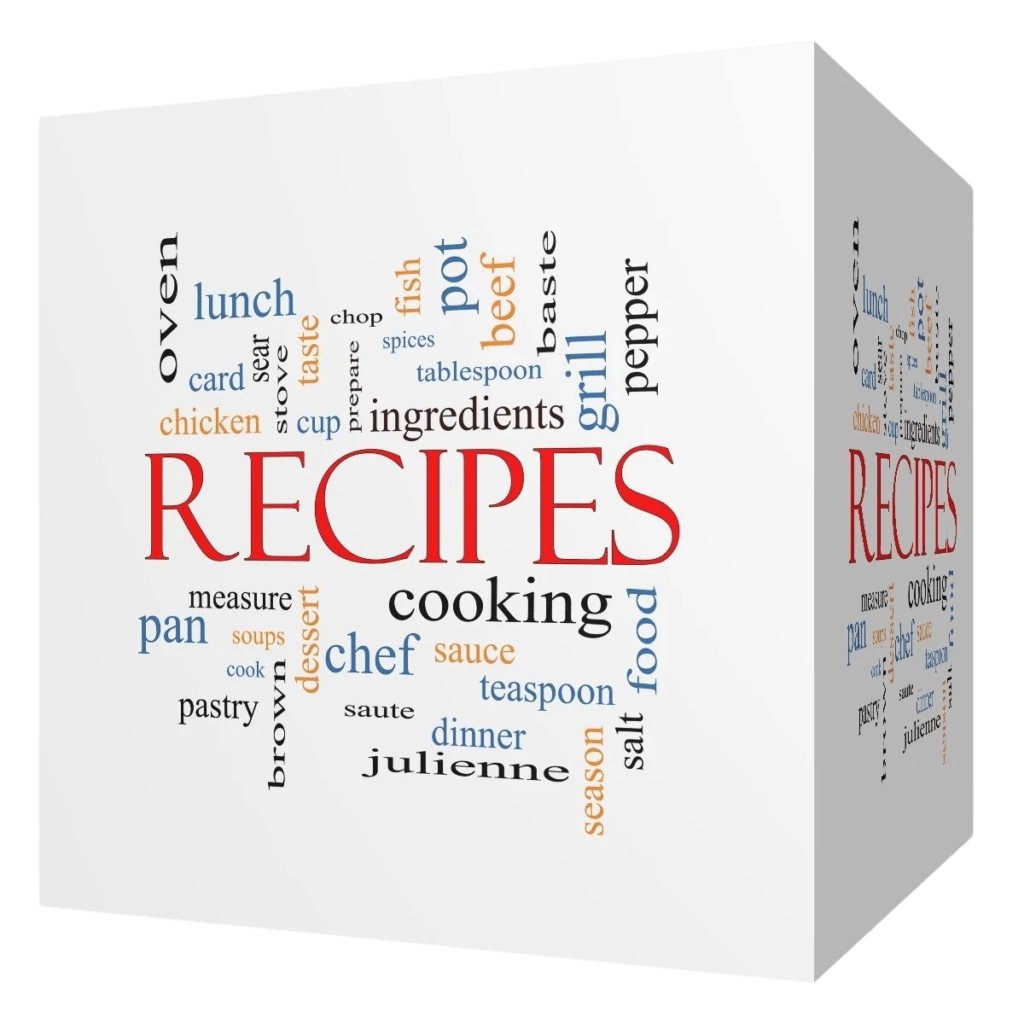
58 Responses
Thanks so much for this chart; I have my first herbs this year.
You are welcome Vicki.
if 2 bunch of curry leaves dried & powdered how much amount will we get as powder
I have no idea SSR. Anyone else want to take a shot at this one?
Stated simply, curry powder is NOT dried curry leaves. In fact, there is only occasionally any curry leaf in curry powder, usually as a minor ingredient. Wikipedia shows the usual ingredients to be “coriander, turmeric, cumin, fenugreek, and chili peppers”, then goes on to note other items sometimes included.
As to how much dried curry leaf (which I have read is not a desirable ingredient. It needs to be used fresh) one would get from fresh, I have no idea.
thank you for being there. i prefer fresh but this weekend i ran out of almost everything so once again thank you for being there.
You are very welcome.
Thanks for this chart, I am little confused why the Thyme conversion goes from dried to ground, is there a fresh conversion? Thanks!
Hi Denise, the ratio for fresh thyme to dry thyme is 3 to 1. If a recipe calls for 1 tablespoon of fresh thyme, you can substitute 1/3 tablespoon dried.
What about converting fresh to crushed dried rosemary? Or even dried rosemary to crushed Rosemary. Thank you
Dianna, I may be wrong here but I’m going to guess there is little or no difference when using dried rosemary vs crushed dried rosemary especially if you are only using the leaves and not the stems.
how about converting 6 sprigs of fresh thyme to dried ground thyme?
Challenging question Veronica. The problem is knowing the size of the sprig because they can vary greatly. If you assume an average sprig of thyme yields about 1/3 teaspoon of fresh, loosely packed leaves, then 6 sprigs would equal about 2 teaspoons of fresh thyme. If the conversion is 3 to 1, fresh to dried, then 6 sprigs fresh thyme should be equivalent to about .66 teaspoons dried thyme if I did my math correctly but now you are asking about “ground” dried thyme. I’m not sure of the conversion between dried thyme leaves and ground dried thyme but when I did a quick search online, I found “6 fresh thyme sprigs = 3/4 teaspoon ground dried thyme”. I hope this helps.
Thankyou!!!
I want to make rosemary tea. It calls for 6 grams but Im not sure how much to use. could you help? I got some fresh; is that 6 leafs on the stem?
1 tablespoon of fresh rosemary = about 1.7 grams so 6 grams should equal about 3.5 tablespoons fresh rosemary.
Trying to find celery seed to ground celery seed conversion. I’ve seen some say 20% less ground compared to whole. Thoughts?
Another excellent question and one I’ve had trouble finding an answer too. I did find this from one website, “Ground celery, like celery seed, has the taste and smell of celery stalks, but its flavor is much more pronounced. Use anywhere you would seeds, but in half the quantity, as ground celery is much stronger.”
If anyone has a better answer, please share it with us. Thanks.
Need to know the conversion from 1/4 cup fresh parsley. I will be using dried.
Thanks.
Hi Bonnie, 4 teaspoons dried should do it.
Well, this is very…unhelpful.
I’ve got many, many recipes which call for things like “2 sprigs of rosemary” or “6 fresh basil leaves” or some such: few, if any, talk about “teaspoons” or “tablespoons” of fresh herbs, so the ratios you give — and seemingly EVERY website I’ve consulted on this so far — are meaningless.
Is this an American thing, which confuses cooking with scientific procedures calling for precise measurement?
I guess so Calton. Sorry to disappoint. What makes it difficult to say “6 fresh basil leaves” yields how much dried is you have no idea how big the fresh basil leaves are. My basil plants in my garden and basil I buy in the store have leaves of varying sizes so how do you convert. Same with “2 sprigs of rosemary”. How big a sprig is it? 2 inches long, 4 inches long, 6 inches long? I see your frustration but really, this is now an “American” thing?
I am looking to buy herbs & spices in bulk and I am needing a guide as to how much various dried herbs and spices weigh eg 1T = ? g or oz? Is there a chart available?
That would be a great chart to have. I’ll start working on one.
Thanks for the great chart! Have been searching for ever for this!!
Many Thanks!!!!!
You are very welcome. RG
Super helpful, thanks for the conversion table.
How can print the chart. If I copy and paste there is no graph, just words etc… I tried on another browser but it cut off half the chart and the orientation was okay…??
Hi Leslie, you may want to “grab” a photo of the chart and print it out as an image.
Nice chart very handy to have.
I’m not sure if there is an error for the bay leaves;
“Exceptions to the Rule
Like everything in life, there are always exceptions to my general rules above. For example, you would substitute 1 fresh bay leaf for 2 dried”, but the chart shows 1 for 1.
Thanks for catching the type-o. It should be 2 dried for 1 fresh bay leaf.
Hello and thank you for this conversion chart! I was familiar with the standard 1/3 dried herb to fresh per volume as I’ve loved to cook with fresh herbs for decades…… I thought most people knew that rule but not! Oh dear and you have been so patient with the funniest of questions…. I’m thinking these are all new to herbs et all?! I found my answer SOOO quickly and I think most people really need a scale in the kitchen whether for cooking or for herbal remedies, DIY cosmetics etc…I use it daily as a hobby!
You helped me know the conversion for powdered calendula flowers vs dried whole.! I can now infuse it correctly for balms so you have made my day!
Yours, Judy
FANTASTIC CHART!!!! Thank you for this. I always knew that there was a conversion for things like this.
I’m curious if there is a similar type of conversion for spicy peppers? I looked after finding this chart and couldn’t find anything. What do you think? 1 tablespoon fresh Ghost Pepper = ????
Not expecting an exact answer, just getting an opinion! 😀
I have a recipe that that calls for for a 1/4 cup of dill sprigs what I would that equal in dried?
Charee, there are 12 teaspoons in 1/4 cup and 3 to 1 fresh to dried ratio for dill so I would say approximately 4 teaspoons dried.
Impressive!
Thank you for the time and energy you put into researching and creating your conversion chart–and then sharing it! Your chart is thorough, unlike the others which only provide one standard conversion formula for the many types of herbs. Thanks for pointing out the differences in measurements for dried vs. ground herbs and hard vs. soft herbs. All the more impressive is your attention to, and patience with, the many questions you receive. You’ve been responding for nearly two years!
If possible, please update the bay leaf conversion. I was totally intrigued by it, but then read the reply saying there had been a typo.
I will be printing the chart and keeping it in a sheet protector, as I’m sure I’ll be using it for years to come.
Thank you! This is tremendously helpful!
I need to use 1 cup of fresh basil and do not have any in my grocery store.
How much dried basil should I use.
Hi Adjanor, I would have to see the recipe because I’m not sure you want to substitute dried basil for fresh basil in that amount. Sure if you need just 2 teaspoons of fresh basil you can substitute 1 teaspoon dried, but 1 cup……..? For example, if you are trying to make pesto with fresh basil, there is no way I can think of that you can substitute dried.
I love this chart thank you
Thanks so much for your chart and guidance re conversion fresh herbs to dry.
Hi Suzanne, you are very welcome.
Sage and boiling water in a quart jar is very healthy for your hair..I’m fixing to try it.
Great Chart, thank you ! Very helpful.
You are welcome Naomi.
The meal I want to cook is asking for 6 tarragon sprigs but I couldn’t buy them so I bought tarragon powder instead.
My question is how much powder do I use to replace the 6 tarragon sprigs without overpowering the meal.
Thank you
Grahame
Great question Grahame. I did a little research and found a sprig “is generally defined as a 2- to 4-inch piece of the herb plant. You can substitute about 1/2 teaspoon of dried herb for a sprig” So for 6 sprigs, try 3 teaspoons of dried tarragon. This doesn’t answer your question because you purchased powdered tarragon and I can’t find an answer for you. If anyone has the right conversion of powdered tarragon to fresh, please let Grahame and me know. Thanks
You have share a great information with me I will appreciate your work.
My recipe calls for 1/2 Tbsp of oregano but I have fresh how much do I need
1 tablespoon of dried oregano converts to 3 tablespoons of fresh oregano so 1/2 tablespoon would convert to 1 1/2 tablespoons.
Thanks for the information.
You are very welcome.
Hi, I have just loved your article, and you did a great job. Thanks.
You are very welcome.
Thank you for sharing this informative article.
I am obviously slow off the blocks, but Thank you! Such a helpful site!
I was so excited to see this list and your chart looks so nice, but I don’t see a printer friendly version. Did I miss it?
Hi Ruth, I have to learn how to make them printer-friendly, but for now, you can copy, paste and print.